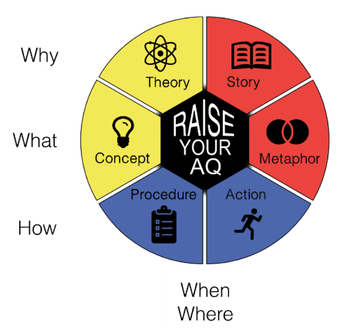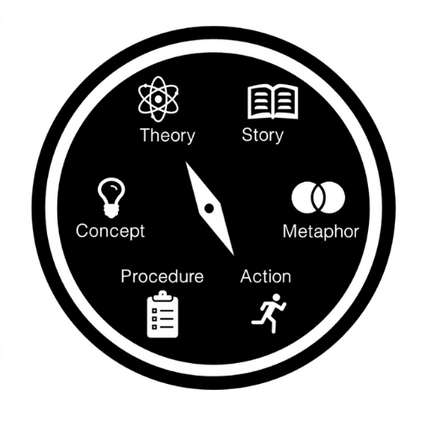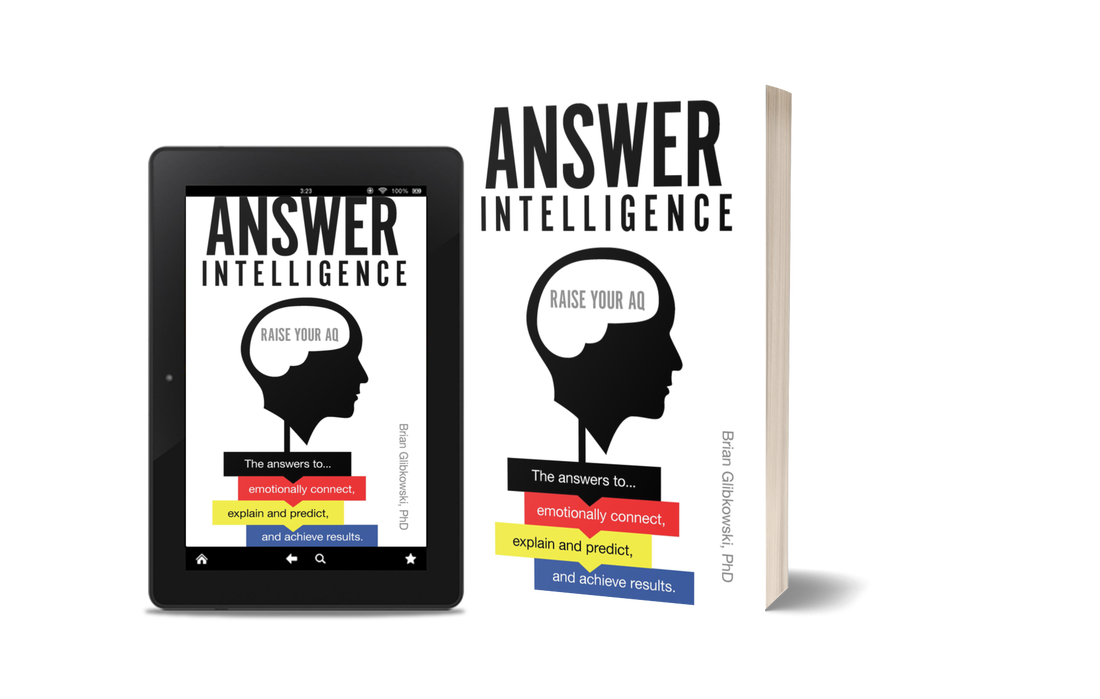|
Ivan Košalko is an Executive Coach and owner of Košalko Consulting LLC. His target customers are the companies and organizations in which the owners, leaders, and senior managers believe that their people are their most important assets. His focus is the growth of first-time managers, particularly in fast growing companies. He typically starts with strengths coaching, which is backed by certification from Gallup—he is a Gallup® Certified Strengths Coach. This article is part of the High AQ Interview Series where executives, academics, and thought leaders discuss elevated answers. The following interview is edited for clarity. The Tools of Executive CoachingDr G: “You are a Gallup® Certified Strengths Coach. You also use other frameworks with clients. What is your perspective on the use of frameworks by executive coaches in the marketplace?” Ivan Košalko: “Many coaches focus upon one methodology as the holy grail of coaching. I use several different frameworks with clients depending on their developmental needs.” Dr G: “How do you decide which frameworks to use with clients?” Ivan Košalko: “Each tool offers something different that meets different client needs. As we know, CliftonStrengths is a framework of 34 strengths which allow a coach to work with the clients to further develop their potential. This contrasts with a focus upon shoring up weakness, which predominates in most consulting and coaching. The CliftonStrengths framework is necessary because most individuals are very poor at identifying their strengths. If you ask a client to identify their biggest weakness, that is much easier than wrestling to the ground their strengths. Working with a framework like CliftonStrengths gives the coach and client a common language to discuss strengths and come to agreement regarding the areas of biggest growth potential.” Dr G: “Can you tell me more about the value of frameworks in Executive Coaching?” Ivan Košalko: “Each framework simplifies and organizes the work. CliftonStrengths helps us understand strengths. Answer Intelligence (AQ)™ is a framework that provides a lot of value to communication. Listening is central to executive coaching. Often, listening can be difficult for an executive coach because clients don’t always give the best answer. A coach may ask a question, and the other person starts to talk about something else, not the answer we are looking for. Or they don’t answer the question at all. You ask why, and they provide a how-answer. The AQ framework helps to navigate the conversation correctly. I have a meeting with a client upcoming that is very long winded. It takes a lot of stamina for me to remain focused on the conversation at a very attuned level I need to be effective. AQ provides a structure that allows me to navigate the conversation. For example, if the client provides a story, I can see if the story is in line with a concept they claim they are using.” Note: this is consistent with High AQ Practice 3: Provide Complements; the strong form of complimentary answers is that all six answer types are complementary and reinforce each other. “Or If I ask a why-question, I can listen for two answer types, a story and theory.” Note: this is consistent with High AQ Practice 2: Answer Twice; important why-, what-, and how-questions can be answered twice for maximum impact and clarity. “Therefore, I use AQ as a proof tool. As the expression goes, the clients often do not know themselves very well. By looking at the consistency between answers I can identify their authentic answers. AQ gives me a framework that allows me to be a better listener.” Dr G: “You did a good job describing the value of AQ to you as a coach. Can you discuss the value of AQ to your clients that are using CliftonStrengths?” Ivan Košalko: “Let me give you an example related to myself. In CliftonStrengths terms, I have a strong ‘Focus’ Theme.” [note: The Focus theme is oriented toward staying on track, prioritizing, and then taking action.] “For a Focus thinker, AQ is an approach to identify and navigate questions and answers in a systematic and structured way that a focus-themed person values.” Dr G: “Is it fair to say that all 34 CliftonStrengths themes can be combined with AQ as an approach to communicate related to each client’s respective strengths?” Ivan Košalko: “Yes, that is correct. I have a client meeting coming up on Friday where I will be finalizing the scope of work. As part of the work, I will have her develop a list of daily and weekly questions she is to ask of herself to create new strengths-based habits. One recommendation I will make is for her to use AQ to identify the answers to those questions. Paradoxically, it is the individuals that have strong Communication talent that benefit most from AQ. When you are an effective communicator, you often use intuition. When people do things intuitively, there is a significant growth potential for clients that are exposed to the right tools. When clients are not aware of tools, they make mistakes that could otherwise be avoided. I had several clients that in a sense communicate with ease – they are expressive, articulate, have a strong stage presence, and can deliver a compelling story or other type of answer. Their blind spot might be that they are not involved in a conversation with others and they tend to monopolize the debate. For example, they say, “I don’t mean to interrupt… then of course they do and they discuss whatever they are interested in or they force their opinion on others. With AQ these kind of clients could benefit from understanding how question-types are mapped to answer-types. They can recognize the question [why, what, or how] and using AQ to provide the appropriate answer in the context of the conversation.” Dr G: “This makes a lot of sense to me. In many respects, I’ve always been an effective communicator my entire adult life. For example, I have always been strong at metaphors and stories, but I was often overly analytical (focusing upon theory and concept). This analytical fixation would often drown out the other answers I could provide. When I was a junior professional out of college, my boss valued my contributions, but others could not understand me. In AQ terms (which would not yet be invented for another 15 years), I would talk about models and system (associated with analytical communication) and my peers wanted a story or perhaps a procedure to get work done. It was a real problem and communication disconnect. We even explored the company hiring a personal communication coach for me. It was not until I developed the AQ framework that I finally had a tool to improve my conversations with others. Your discussion of strengths has given me an insight into myself as an effective, but flawed communicator, that could benefit from a framework (AQ in this example). Thank you for making that connection for me between strengths and the importance of frameworks.” This article suggests at least two High AQ Takeaways. High AQ Takeaway 1: Effective coaches need to be effective listeners, as they seek to read between the lines to understand their clients. AQ is a framework that organizes questions and answers allowing an executive coach to be a more systematic and effective listener. High AQ Takeaway 2: Executive coaches should provide their clients with multiple frameworks, that are often used in combination. CliftonStrengths identifies among 34 strengths a client may have. AQ provides a framework by which any of the strengths can be more effectively communicated by a client. If you found Answer Intelligence (AQ)™ an interesting framework, please share this post with others.
1 Comment
Introduction
Dr. Freiburger and I discussed how he has demonstrated High AQ both in terms of winning client business and during a coaching engagement. He also speculates that AQ can be an effective meeting management tool for executive coaches. The following interview is edited for clarity. This article is part of the High AQ Interview Series where executives, academics, and thought leaders discuss elevated answers. Winning DealsDr. G: “Tell me about a coaching deal you won.” Dr. Chris Freiburger: “They were interviewing other coaches. All had experience with the client.” Dr. G: “Invariably, a question is asked, ‘Why should we hire you?’” Dr. Chris Freiburger: “I would provide a story. This differs from my competitors. Most executive coaches will tell you there is a rigorous framework, 1-hour interview, tests, 6 coaching meetings, every 3rd week. They discuss a standard engagement.” High AQ Takeaway 1: If you are asked a why-question, provide a story or a theory answer. Too often those with Low AQ provide the wrong answer to the question being asked. Dr. G: “Tell me more about what distinguishes a High AQ story from a Low AQ story.” Dr. Chris Freiburger: “An effective story is a touchpoint to all of the other five High AQ answers. For example, I can transform my story into a catalyst metaphor… I’m here to challenge and push. Or, I can discuss my theory of coaching, or any of the other answer types. I can use this story to draw a contrast with my competitors who often focus upon rigid procedures and actions. In my story I can highlight that as a catalyst the procedures will sometimes be sequential, sometimes reversed. I can draw a sharp contrast between my dynamic approach and the mechanical approach of some of my competitors when it comes to coaching methods.” High AQ Takeaway 2: Those with High AQ can take any given answer and transform it into the other answer types. This makes for an economical and reinforcing conversation. Effective ConversationsDr. G: “The difference between High AQ and Low AQ is often subtle. Can you illustrate this subtle difference with a client engagement?” Dr. Chris Freiburger: “I just got off a call with an executive coaching client. I asked him a question that threw him for a loop. I said, ‘I want you to tell me, when your boss comes to you to pick your brain about ideas, does he view you as a thought leader or a thought partner?’ He wrestled with this question. Then, we discussed that a thought partner is someone you bounce ideas off (lower level thinking) and a thought leader is someone you ask for advice about the future. He got it. Then I told my client, ‘I want you to think about how you take your skills and attributes and leverage them in a way so that you become a thought leader.’” High AQ Takeaway 3: Those with High AQ are in complete command of important concepts. This example from Dr. Freiburger conveys several subtle aspects of High AQ concepts. Specifically: (1) The client conversation is centered around teasing out the differences between seemingly similar concepts: thought partner and thought leader. Additionally, by providing two concepts, the client is engaged in active thinking. Dr. Freiburger said, “I could have said, ‘part of your development need is to position yourself as a thought leader with your boss.’ I don’t think that engages him in a way that is interesting.” (2) Transform an answer into a question. Effective coaches guide a client from point A to point B in a conversation. Dr. Freiburger transformed a concept-answer (the thought leadership concept) into a question. When you understand an answer, it gives you insights into asking more interesting and effective questions to guide a client. AQ as an Executive Coaching ToolDr. G: “How can someone use AQ in executive coaching?” Dr. Chris Frieberger: “I’ve facilitated a lot of meetings with Dr. Edward de Bono’s Six Thinking Hats®. In a 30- or 60-minute meeting, most leave and have a sense that nothing was accomplished. According to Dr. de Bono’s framework, nothing gets done because everyone thinks differently at the same time. One attendee is in brainstorming mode, another in critical thinking mode. Everyone is wearing different hats. The insight of Six Thinking Hats® is to get all attendees to put on the same hat at the same time to communicate effectively. AQ can create the same type of mental alignment. For example, if a what-question is asked, all meeting attendees will know a concept and/or metaphor is an appropriate answer. If you layer in the 5 High AQ practices, you will be using the same rules of effective conversations. For example, High AQ Practice 3 (Provide Complements) holds that adjacent answers complement each other, and opposite answers can resist each other. In this manner, if a manager is a storyteller, and a procedure is the desired answer, it explains why a story provided to a how-question can derail the conversation (they are opposite answer types). I have found that when using six hats to facilitate a meeting you can take people through a meeting a lot faster and effectively. Similarly, AQ is an approach that can create alignment around questions and answers to efficiently and effectively navigate high stake conversations.
If you found Answer Intelligence (AQ)® an interesting framework, please share this post with others.
|
Access Octomono Masonry Settings
AuthorDr. Brian Glibkowski is the author of Answer Intelligence: Raise your AQ. Archives
October 2022
Categories
All
|
About AQ
Answer Intelligence (AQ)™ is the ability to provide elevated answers to explain and predict in a complex world, emotionally connect, and achieve results. Are you conversation ready?
Meet HarperHarper's story illustrates the transformative power of AQ in her own career and in the success of her organization.
|
AQ Upskilling PlatformAI is machine thinking. AQ is human thinking (developed based on academic research) in terms of simple questions (why, what, how, when, where, who) and answers (concept, metaphor, theory, story, procedure, action) that elevate human-to-AI and human-to-human communication.
|
Quick Access LinksBuy the Book
Explore AQ (Free Assessment) AQ TEDx Video Professional Services Firms + AQ Brian Glibkowski, PhD - AQ Creator Meet Harper - Overview Video Meet Mark - Software Case Reasons You Need AQ |
Featured |







 RSS Feed
RSS Feed